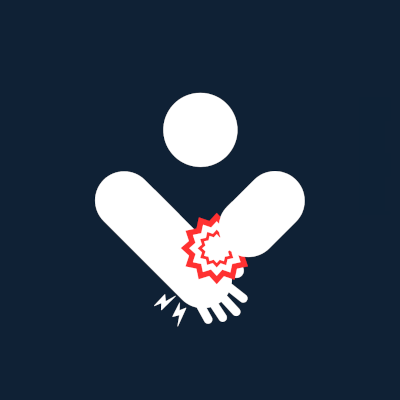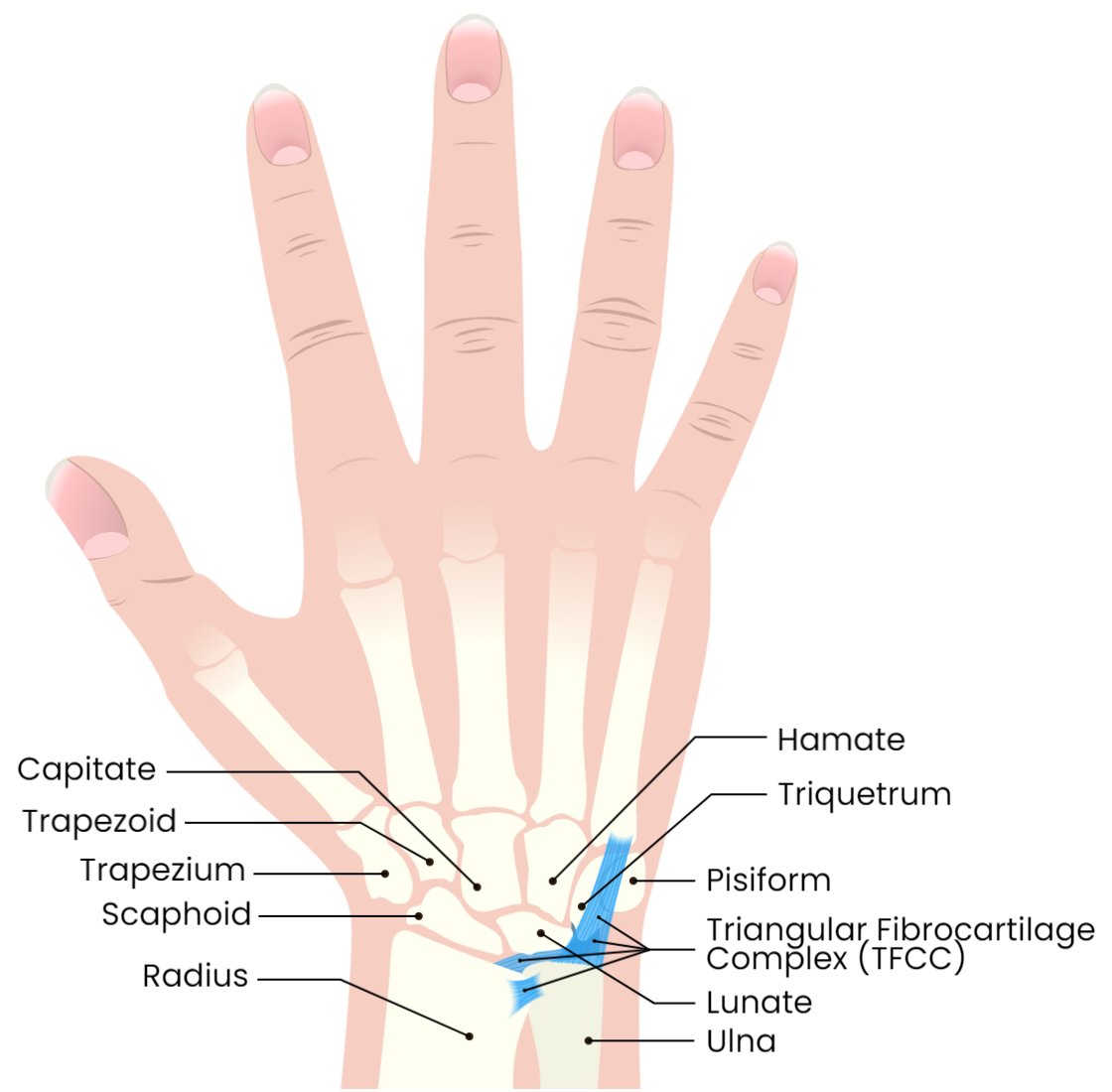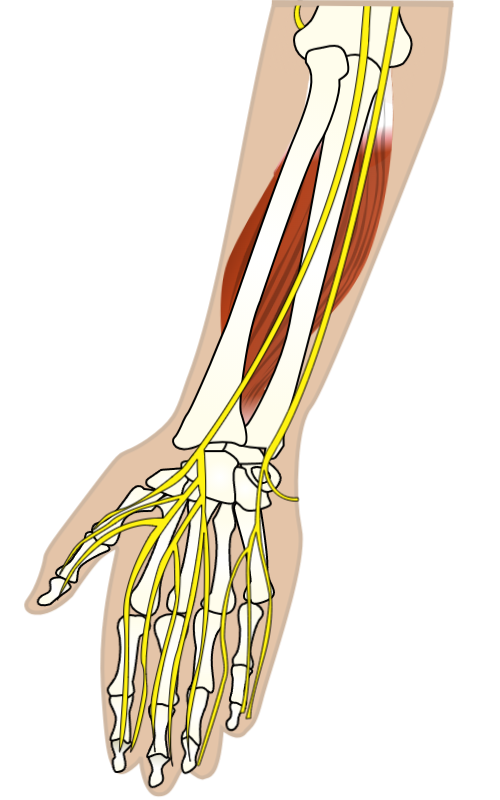Why does my wrist hurt?
When I put pressure on my wrist, it hurts! What is it? What could be causing the pain?
Great questions,
First its important to understand what makes up the wrist!
There are bones in your wrist called carpals. There are two rows with a total of 8 bones that move when you bend your wrist. You also have your forearm that is made up of your radius and ulna. But we are more interested in the part of these two bones that connect with your carpal bones. All these are kept together by ligaments and capsule which are dense fibrous pieces of connective tissue!
Diagram of Carpal Bones and Triangular Fibrocartilage Complex (TFCC)
There are also a series of muscles that cross over the wrist as tendons. These help the wrist move in different directions and provide strength for gripping. There is also a network of nerves that crosses the wrist as well!
What could have caused my wrist to be sore?
There are several common reasons:
A recent sports injury – sometimes colliding with other players can cause your wrist to bend in a weird way
Falling on outstretched hand (FOOSH) – usually occurs when you slip and land on your wrist first with your elbow straight. Common during the winter season or those annoying lips on the sidewalk
Repetitive pushing or pulling with your wrist – perhaps you have a job that requires you to push and pull heavy objects
Constant weightbearing in the wrist – gymnasts often have wrist injuries because their entire body weight is loaded onto their wrists, or maybe your job requires you to constantly bear weight on your wrists
Repetitive overuse – do you work in a factory where you need to do the same repetitive task with your wrists?
The neck – you’ve heard this a lot from me before, but the spine is a common source of pain for the extremities. In current research, the chances of this are 38.5% as seen in this study.
Nerves travelling down the arm to the fingers, which could be the source of your wrist pain and tingling.
What is in my wrist that could cause pain?
Great question, here are some of the common diagnoses indicating why you may have soreness around your wrist:
Wrist tendinitis – irritation of tendons that cross the wrist, a tendon is the part of a muscle that attaches to bone
Osteoarthritis of the wrist – often described as having stiff wrists from age related changes
Wrist sprain – overstretch of the ligaments around the wrist
Carpal tunnel syndrome – when the nerves in the wrist get pinched, which can sometimes cause pain but more commonly causes tingling and/or numbness
Wrist strain – an injury to the muscle belly, often due to overstretch of the muscle or a quick forceful contraction under stretch
A physiotherapist is trained to ask specific questions and complete tests to help figure out what could be causing your pain. The body is complex so there are many different potential sources of the pain in your wrist. Once your physiotherapist has determined what the injury is, they can provide an appropriate treatment plan and timeline for how long it could take to heal. This can vary from several weeks to months. For older injuries, it could take months to years. But this all depends on how recent or severe the injury is.
My wrist clicks or clunks, could it be something serious?
I get this question a lot. A click is often not a concern, unless it is followed by pain.
Some structures that could cause a click are a tendon, ligament or soft tissue rubbing over a bone. One example is the disc, cartilage and ligaments in your wrist known as the triangular fibrocartilage complex (TFCC) – try saying that three times real fast! The TFCC functions as a cushion between some carpal bones and the ulna.
A clunk could indicate some level of instability meaning that you could have had a previous injury where you injured the ligaments. Ligaments that have been injured may become more lax which can result in more movement in your wrist. This can cause increased pain for some people and none in others. It usually depends person to person and what you do on a regular basis.
If you are concerned about your wrist, you may want to have an assessment completed by a physiotherapist. Not only can a physiotherapist help you understand your injury, they can also give you strategies on how you can decrease the pain and return to your activity or sport. This could include:
Specific stretches for any tight muscles
The exact exercise to strengthen weak muscles around your wrist
An appropriate brace that could decrease pain and improve stability
Taping techniques if you are an athlete needing mobility and support
A comprehensive program to develop tolerance to load in your wrists
Could it be a fracture?
There are a lot of things to consider when asking this question: Was there a recent accident where you fell on your wrist? Did someone or something make contact with your wrist? Do you have low bone density? What are you feeling and where?
Consider some of the symptoms listed below:
Night pain that is constant
Swelling at the wrist
Inability to grasp or pinch objects
There is a visible change in the shape of your wrist
Bruising
This blog isn’t a substitute for medical advice or health care. If you suspect you have a fracture, it is best to see a health professional to rule it out. Your physiotherapist can assess your wrist to determine this based on your history and how you feel. An X-ray is usually the best way of finding out if something is fractured. If you are experiencing wrist pain, a physiotherapist who can properly assess and diagnose your wrist can help decrease your anxiety around your injury, and provide you with the right tools to heal!
Book an assessment with one of our physiotherapists today!




